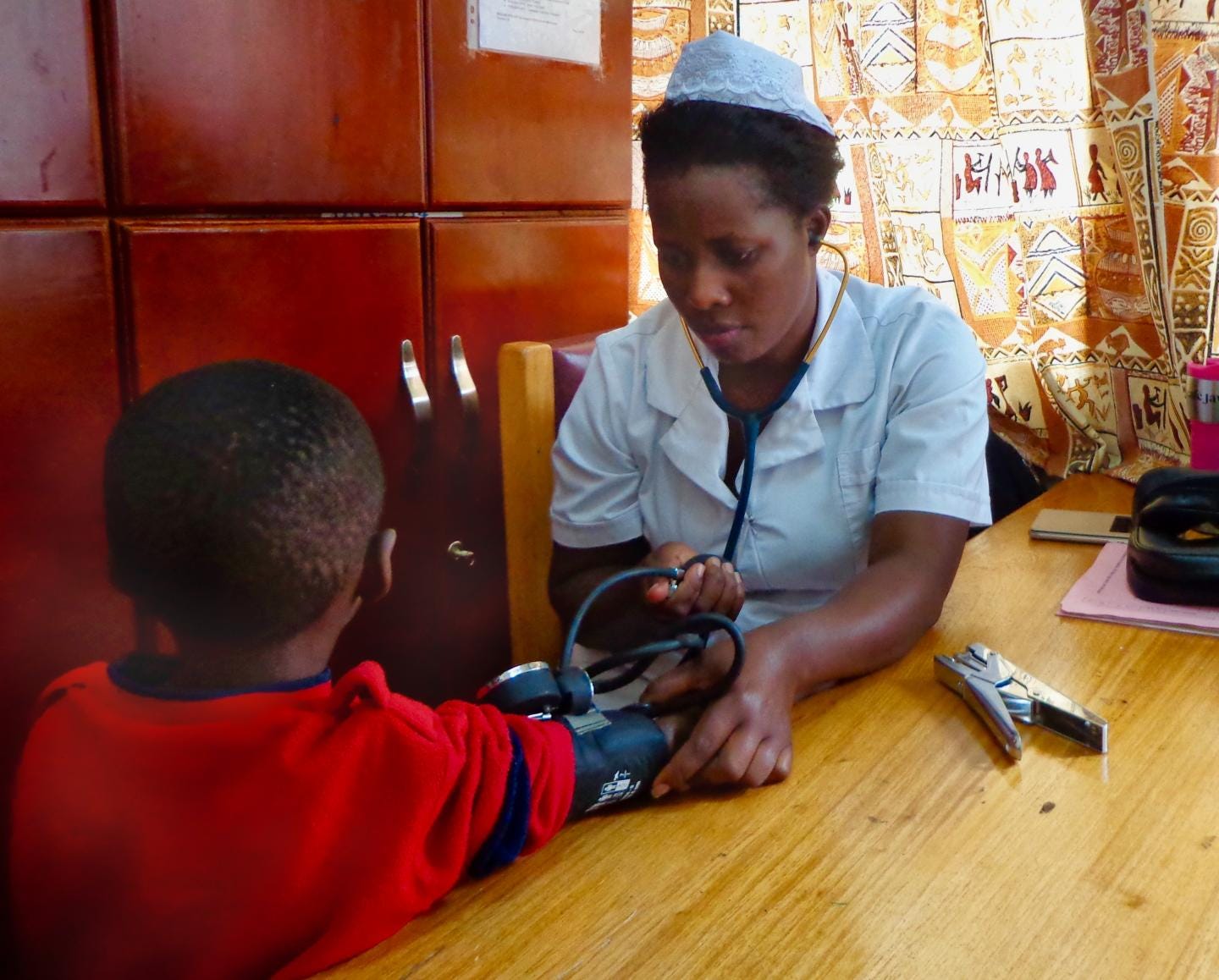IU Uncovers Best Sickle Cell Treatment for Sub-Saharan Africa
 Nurse Susan Murungi works with one of the children enrolled in IU's first study. (courtesy: IUSM)
Nurse Susan Murungi works with one of the children enrolled in IU's first study. (courtesy: IUSM)
Subscriber Benefit
As a subscriber you can listen to articles at work, in the car, or while you work out. Subscribe NowThe vast majority of children with sickle cell disease live in sub-Saharan Africa and, if untreated, many will die from complications before the age of five. Despite the heavy burden, children in the region don’t have access to the best treatment, which is standard in the U.S. But an Indiana University School of Medicine (IUSM) researcher is helping lead the charge to change that. Buoyed by recent publication in the prestigious New England Journal of Medicine, the study he co-led is paving the way for the best treatment to be delivered in a region where it’s needed most.
A drug called hydroxyurea is the standard treatment for sickle cell disease in the U.S. and Europe, but children in sub-Saharan Africa didn’t have access to it until many years after other regions. IUSM led a study a few years ago that proved hydroxyurea is safe and effective for children in sub-Saharan Africa; IU researchers say, previously, there was some concern that the drug’s side effects may have more consequences in the region. Despite this important progress, these children still lacked the best treatment.
“We used a fixed dose [in the earlier study], because that was by far the easiest to give [in sub-Saharan Africa], but in the U.S., an escalating dose is used, because it’s thought to be more effective,” says Dr. Chandy John, a physician scientist at IUSM’s Ryan White Center for Pediatric Infectious Diseases and Global Health and the study’s lead co-investigator. “You increase the dose and make sure it’s safe at the higher dose, because hydroxyurea does have some side effects. But people didn’t want to do that in Africa, because it’s more complicated to do.”
The desire to uncover the best treatment for sickle cell disease in sub-Saharan Africa led to the most recent study, in which IUSM partnered with Robert Opoka, MMed, at Makerere University and Mulago Hospital in Uganda. The study divided nearly 200 Ugandan children into two groups: one group was given the fixed dose of hydroxyurea, and the other an escalating dose. The study overwhelmingly showed that the higher dose was more beneficial.
“We also thought that maybe the escalating dose would have more complications, [but it showed similar side effects as the fixed dose],” says John. “To see this so unequivocally—to the point that the study’s [monitoring] board stopped the study early, because they said the difference was so huge, it was not ethical to continue having two groups—that was amazing. None of us, including our sickle cell experts, expected the differences would be so huge. We were really shocked.”
John says the financial cost of making the escalated dose standard in sub-Saharan Africa is not significant; the higher dose isn’t much more expensive, drug companies are subsidizing the medication, and the Ministry of Health of Uganda could classify it as an essential drug, meaning it would be provided for free. However, the logistics of moving children in sub-Saharan Africa to the higher dose present challenges.
“In rural areas, you have to get people who know what to do with sickle cell; it’s specialized training, but we can’t have a bunch of pediatric hematologists all over the country—that’s not practical, so training is needed for frontline healthcare workers in the basics of what to do with sickle cell,” says John. “Our next set of studies is looking at very practical things about implementation. We did this at a national referral hospital in the capital city, but most kids with sickle cell are in rural areas with less resources. One study we’re proposing is…how do we practically implement this in lower-resource settings?”
John notes an escalated dose is not currently the standard in some European countries and other regions, so the recent study in Uganda is expected to have worldwide impact. The study’s publication in the New England Journal of Medicine emphasizes its importance internationally.
“It’s validation that a community of experts believes this study is going to have a lot of impact for kids with sickle cell disease,” says John. “We hope this will change practice for the area with the overwhelming majority of kids with sickle cell.”
John believes the study is also evidence of IUSM’s ability reach beyond its geography to improve care.
“It puts IU into the world and into problems that affect kids in Indiana—because sickle cell certainly does—but also affect kids and adults worldwide,” says John. “We have an impact on populations that are not our own, that are very under-served, and that’s incredibly important.”
John says the study is especially significant for IUSM’s collaborators in Uganda.
John says it will take a few years to fully develop the framework for children throughout Uganda to be moved to the higher dose.
